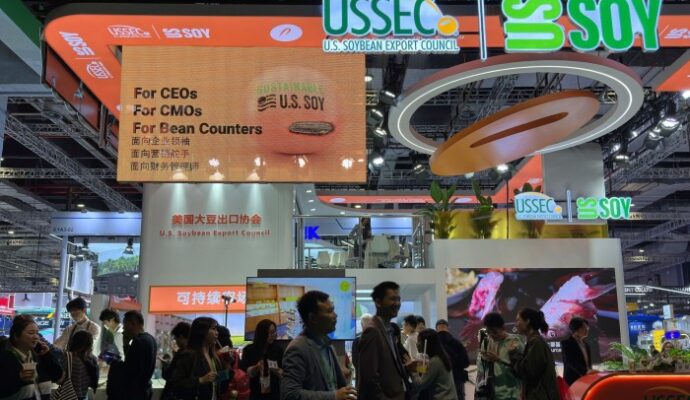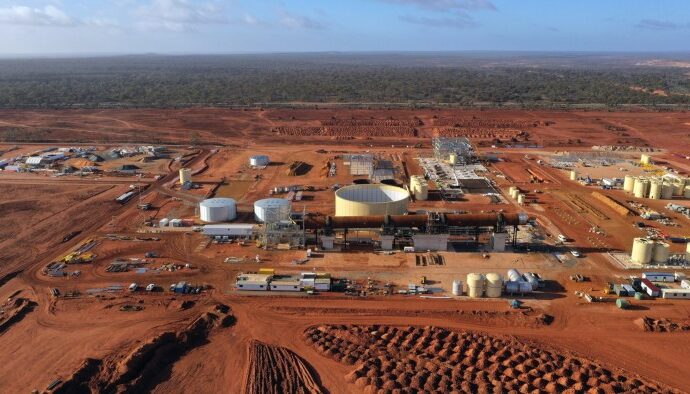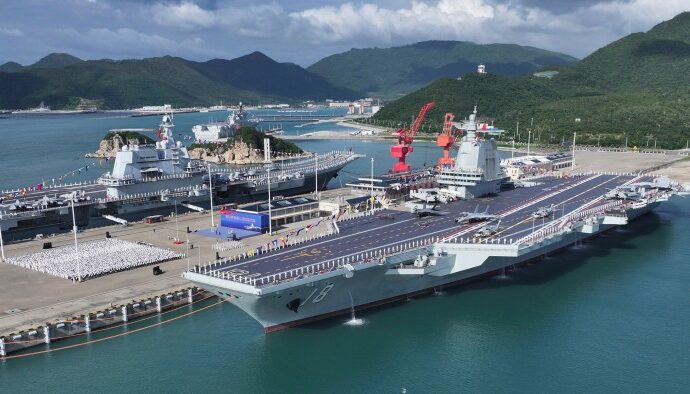As you round the corner on Shanghai’s Shimen Second Road, a giant ship appears like an apparition. Suspended from its hull, the anchor that descends to the street is in the shape of two six-foot-tall letters: LV.
“The Louis”, a ship-shaped exhibition space and store, is the brainchild of Louis Vuitton and an attempt to navigate the choppy waters of China’s luxury market. Once the driver of global growth, it is now a source of uncertainty for the world’s biggest brands.
“It’s not often you see a brand making this big an investment . . . and I know it’s not long-term,” said Grace Sze, a tourist from Hong Kong queueing to enter. “To spend that much money, I think it’s amazing.”
Louis Vuitton has not disclosed the cost of its new ship, which has an exhibition, including a robotic arm testing the hinges on vintage Louis Vuitton suitcases, a café and a gift shop where small handbags are available for Rmb15,500 ($2,104).
But the group’s owner LVMH said it had helped drive a 7 per cent year-on-year increase in China sales in the third quarter, albeit from a low base. In Shanghai, the brand says it has drawn in hundreds of thousands of visitors since it opened in June.
“It’s a lot of fun, a lot of excitement,” said LVMH chief financial officer Cécile Cabanis. “All our neighbours are very happy that it’s driving so much traffic.”
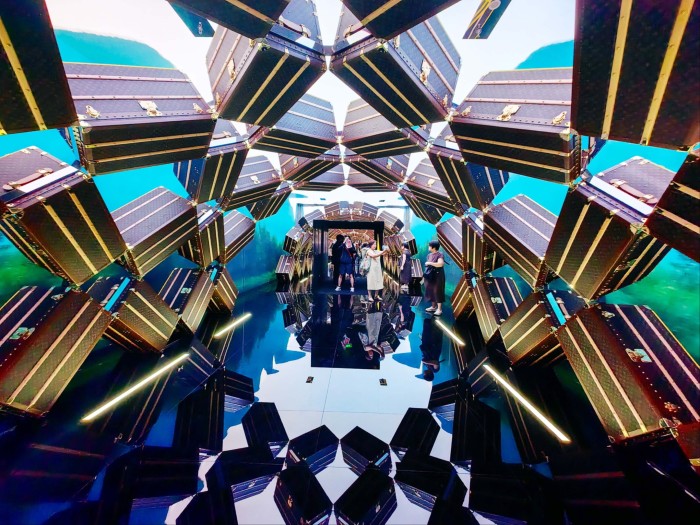
But glamorous installations like this aside, there is a persistent sense of caution in China’s luxury market. Brands are retreating to the most exclusive locations, adjusting to slower growth and changing consumer sentiment.
As a four-year property slowdown grinds on and consumer prices remain stuck in deflation, there are signs of people are reining in their spending and looking for discounts.
In their most recent results, brands insisted the market had stabilised but continued to warn about the outlook.
“Overall the macro has not changed fundamentally,” Cabanis said, citing continued pressures in the property market and around employment. “We consider it’s still going to take time until we have a rebound.”
Other luxury groups including Prada, Hermès and Kering — owner of Gucci — said they saw early signs that the Chinese market had stopped declining. But improvements came against a low base.
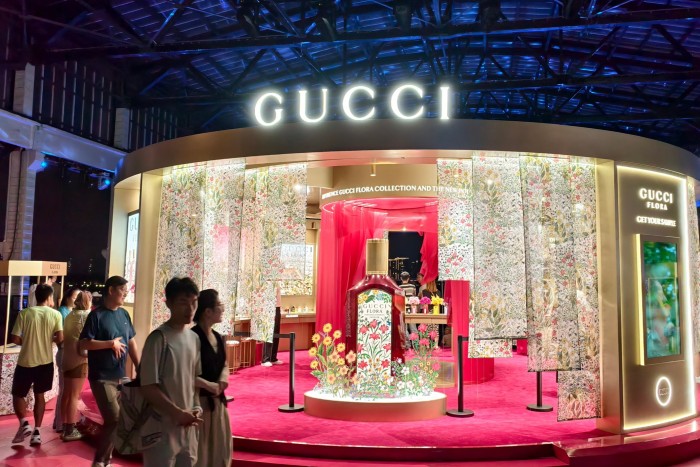
“Chinese consumption remains under pressure,” said Nick Anderson, an analyst at Berenberg.
From the early 2000s, China was the luxury industry’s engine of growth as rapid economic expansion fuelled a rising middle class keen to display its new wealth. By the time the Covid-19 pandemic arrived, Boston Consulting Group estimated the country made up a quarter of global demand.
But after China’s strict Covid lockdowns came to an abrupt end in 2022, the rebound in consumer spending was much smaller than expected, weighing heavily on the global luxury market, which according to Bain entered its first slowdown in 15 years in 2024.
“During the boom times [brands] overextended and covered too many cities,” said Nick Bradstreet, head of Asia Pacific retail at estate agent Savills.
Before Covid, they would target 40 to 50 cities across China and “the only discussion would be how long it’s going to take to get there”, he said. But today, they target fewer places, and the 10 biggest cities account for 70 per cent of all the country’s luxury sales.
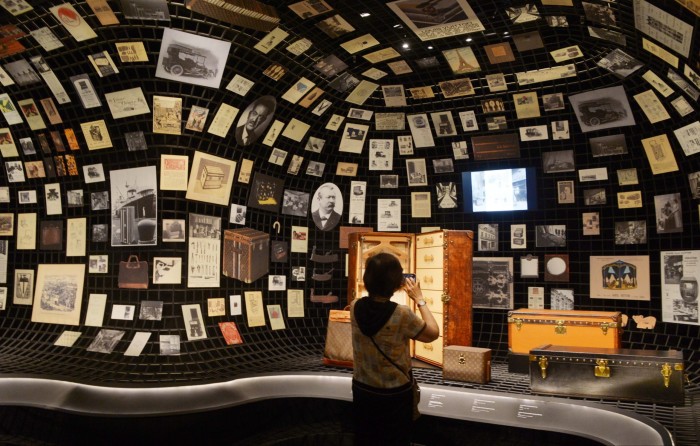
The Louis Vuitton ship exterior is not permanent but is expected to remain in place for four years, according to a person familiar with the details. Other brands have also sought to draw in crowds with exhibitions, including a Gucci event in Shanghai this year celebrating its signature Bamboo bag, where craftspeople were flown in from Italy.
Outside, crowds of tourists stop to take photos to the extent that signs with “filming guidelines” have been put up nearby.
“It makes sense that LVMH did this while the market is down,” said one industry veteran. “The Chinese market was not improving, so they needed to do something to move the market for themselves.”
But they also questioned its appeal to the industry’s core consumers. “The ship is fun and exciting to people who have seen it on TikTok, but would you ever see Hermès or Chanel park a cruise ship in the middle of a city?”

Anderson suggested the pre-Covid global luxury boom was driven by one-off factors, including US stimulus and the rise of the Chinese consumer. The global market for luxury goods is expected to grow between 0 and 4 per cent in 2025, according to Bain’s estimates. Between 1996 and 2024, the rate was 5 to 6 per cent a year.
Much of the outlook hinges on a handful of China’s biggest cities, and whether the huge crowds drawn to spectacles like the Louis Vuitton ship are willing to spend.
Ms Lei, visiting from Shanghai’s Pudong district, did not get anything but already has two Louis Vuitton bags, bought about a decade ago. “Now it’s a time of decline for the economy,” she said, but added: “If I like it . . . I can definitely buy it.”
